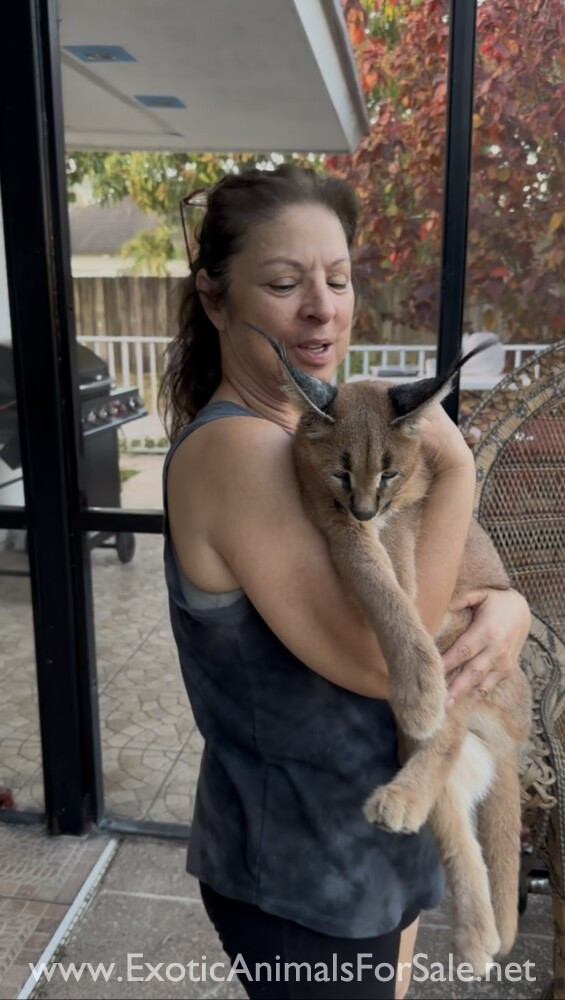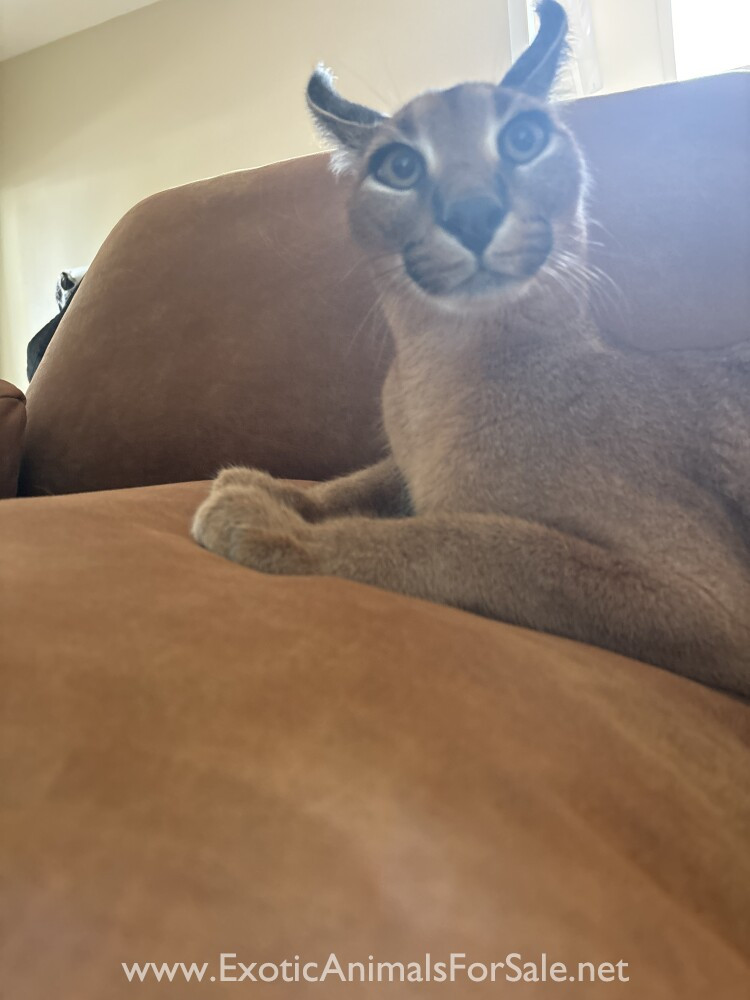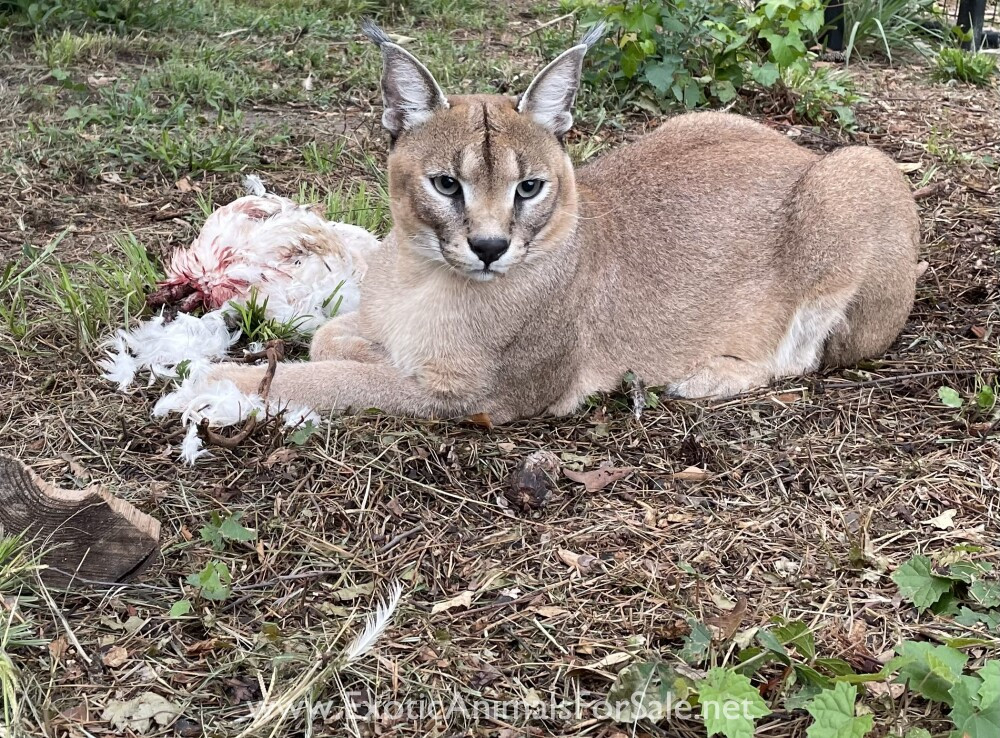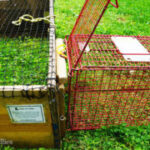Caracals, often dubbed “desert lynx,” are captivating wild cats known for their striking tufted ears and elusive nature. Native to Africa and parts of Asia, these felines have garnered attention as exotic pets. If you’re intrigued by the prospect of owning one, understanding the Caracal Cat Price and the associated costs is crucial. This article delves into what determines the price of a caracal and what expenses to anticipate beyond the initial purchase.
 A close-up of a caracal cat's face, highlighting its distinctive black-tufted ears.
A close-up of a caracal cat's face, highlighting its distinctive black-tufted ears.
Factors Influencing Caracal Cat Price
The price of a caracal cat is not fixed and can vary significantly based on several key factors:
-
Age: Caracal kittens are generally more expensive than adult caracals. Kittens are highly sought after due to their adaptability and longer potential lifespan with their owners. As seen in listings, kittens like “Holiday” are offered at a starting price, while adult caracals may be available for rehoming at different price points or sometimes for free to the right experienced owner.
-
Lineage and Breeder Reputation: Caracals from breeders with a strong reputation for ethical breeding practices and healthy lineage often command higher prices. Breeders who prioritize the well-being of their animals, conduct health screenings, and ensure proper socialization contribute to the higher caracal cat price.
-
Tameness and Training: Caracals described as “super tame,” especially kittens hand-raised and accustomed to human interaction, can be priced at the higher end. The listing for “Lush Savannahs,” a “super tame caracal girl,” exemplifies this, with a price reflecting her temperament and handling.
-
Location and Availability: Geographic location and local regulations regarding exotic pet ownership can influence the caracal cat price. Areas with stricter regulations or limited breeders may see higher prices due to scarcity and the complexities of legal acquisition.
-
Legal Permits and Documentation: Obtaining legal permits to own a caracal is a significant factor. The caracal cat price might reflect the breeder’s assistance in navigating these legal requirements, or the inclusion of necessary documentation.
Average Caracal Cat Price Range
Based on available listings and market trends, the average caracal cat price typically ranges from $5,000 to $20,000 or even higher.
-
Kittens: As seen with “Holiday” priced at $5,500.00, caracal kittens often start at the lower end of this range but can quickly escalate depending on lineage and breeder.
-
Adult Caracals: Adult caracals, like “Kaitlyn,” seeking rehoming, might have varied prices depending on age, temperament, and the owner’s circumstances. Sometimes, adult caracals are available for lower prices or rehoming fees compared to kittens.
-
Breeding Pairs/Trios: Established breeding pairs or trios, such as the “Breeding pair of Caracals” and “Caracal trio” listed at $13,000 and $16,000 respectively, are priced as investments for breeding programs, reflecting their reproductive value.
It’s important to note that these figures are indicative and can fluctuate. Always verify the current caracal cat price with reputable breeders and consider the comprehensive costs of ownership.
 A young caracal kitten with spotted fur, sitting in a grassy environment.
A young caracal kitten with spotted fur, sitting in a grassy environment.
Beyond the Initial Caracal Cat Price: Hidden Costs of Ownership
The caracal cat price is just the initial investment. Owning a caracal entails significant ongoing expenses that potential owners must be prepared for:
-
Specialized Diet: Caracals are obligate carnivores requiring a diet rich in meat. Feeding them a proper diet of high-quality meat, as mentioned in the original article (“2-3 pounds of meat per day”), can be considerably more expensive than feeding a domestic cat.
-
Veterinary Care: Exotic pets often require specialized veterinary care. Finding vets experienced with caracals can be challenging and potentially more costly than routine care for domestic animals. Regular check-ups, vaccinations, and emergency care should be factored into the budget.
-
Enclosure and Housing: Caracals are wild animals and require secure, spacious enclosures that mimic their natural habitat. This can involve significant upfront and maintenance costs for outdoor enclosures or specialized indoor spaces.
-
Permits and Legal Compliance: Obtaining and maintaining the necessary permits to legally own a caracal can involve fees and ongoing compliance costs, varying by location.
-
Insurance and Liability: Homeowner’s insurance might not cover exotic pets, and specialized insurance may be necessary to protect against liability and potential damages.
-
Potential for Damage: As highlighted in the original article, caracals can be “rambunctious and accidentally destructive.” Potential damage to property and furniture should be considered as a financial risk.
Is a Caracal Cat Right for You? Considering the Price and Responsibility
While the allure of owning a caracal is undeniable, the caracal cat price is only one aspect of responsible ownership. The significant financial commitment extends far beyond the purchase price to encompass the long-term care, specialized needs, and legal obligations associated with keeping a wild animal.
Before considering purchasing a caracal based on price, prospective owners must thoroughly research and understand the profound responsibility involved. Factors beyond cost include:
-
Commitment to Welfare: Providing a suitable environment, diet, and care for the lifespan of a caracal (17-19 years in captivity) is a substantial commitment.
-
Expertise and Experience: Caracals require experienced owners who understand their unique behaviors and needs, as noted in the original article regarding “misunderstood body language.” Novice exotic pet owners might be unprepared for the challenges.
-
Ethical Considerations: The ethical implications of keeping a wild animal as a pet should be carefully considered. Ensuring the caracal’s well-being in a captive environment is paramount.
 A breeding pair of caracals, showcasing their elegant build and tufted ears.
A breeding pair of caracals, showcasing their elegant build and tufted ears.
Conclusion
The caracal cat price serves as an initial indicator of the financial investment required to own one of these magnificent animals. However, it’s crucial to recognize that the true cost of caracal ownership extends far beyond the purchase price. Responsible ownership demands careful consideration of the long-term financial, ethical, and practical implications. If you are seriously contemplating caracal ownership, thorough research, realistic financial planning, and a genuine commitment to the animal’s welfare are indispensable.


